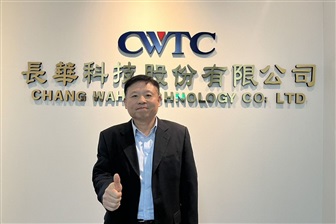Nvidia CEO Jensen Huang announced that the company's new Vera Rubin has entered mass production and is preparing for widespread shipments. The design represents a rare major engineering overhaul for Nvidia, involving significant changes to assembly and manufacturing processes with deeper direct involvement from the company.
India's backend semiconductor manufacturers are benefiting from a narrow window of materials comfort that is closely tied to the use of legacy packaging technologies.
Nvidia recently acquired Groq's technology license and integrated its core technical team, sparking curiosity about the chip giant's investment philosophy. At CES 2026, Nvidia CEO Jensen Huang outlined the company's three main investment focuses that guide how it deploys its abundant cash reserves.
The Taiwanese Executive Yuan's 2026 Science and Technology Advisory Meeting concluded with Taiwan's top technology firms represented by new leaders, including TSMC's Cliff Hou and MediaTek's Rick Tsai. President Ching-te Lai emphasized that 2026 marks a critical year to strengthen Taiwan's semiconductor capabilities and advance AI projects alongside the biotech, defense, and SME sectors.
At CES 2026, Nvidia CEO Jensen Huang identified physical AI as the next significant evolution in artificial intelligence. Huang categorized physical AI into two main types: one involving direct interaction with the physical world through robots and autonomous vehicles, and the other focusing on understanding physical laws for applications such as weather forecasting and protein structure prediction.
Nvidia officially introduced its next-generation autonomous driving platform, Drive AGX Hyperion, at CES 2026 in Las Vegas, signaling an important shift in the self-driving industry. The new platform represents a move away from isolated development efforts by automakers and Tier 1 suppliers toward a collaborative, ecosystem-based approach for scalable, certifiable autonomous driving systems.
On January 7, 2026, Micron Technology announced that it will officially begin construction on its megafab in Onondaga County, New York, on January 16, 2026. The project, which followed environmental reviews and permit approvals, represents the largest private investment in the state's history and is intended to expand the company's memory manufacturing capacity to meet growing demand from artificial intelligence systems.
PentaPro Materials Inc., a Taiwanese supplier of semiconductor process chemicals, has joined the supply chain of TSMC and plans to invest NT$3 billion (US$95 million) in a second manufacturing facility in southern Taiwan as it scales capacity for advanced logic, advanced packaging, and high-performance computing applications.
To overcome AI's limits, a bridge must be built between computer science and biology, according to Kea-Tiong Tang, a professor from Taiwan's National Tsing Hua University (NTHU) and a leading scholar in neuromorphic computing. Tang recently led a Taiwan team to the US for CES in 2026, demonstrating efforts to break from the traditional von Neumann architecture.
As 2026 begins, the global DRAM market is experiencing a rare price spike. Tight supply, rapid AI expansion, and expectation-driven buying have pushed memory prices higher since the second half of 2025, with gains outpacing most commodities. Hoarding and speculative behavior have emerged, with industry sources comparing the value of a crate of server DRAM modules to the price of an apartment in Shanghai.
Arm Holdings has restructured its operations to create a Physical AI business unit. The move expands its footprint in robotics, as automation systems dominated this year's Consumer Electronics Show.
More coverage



